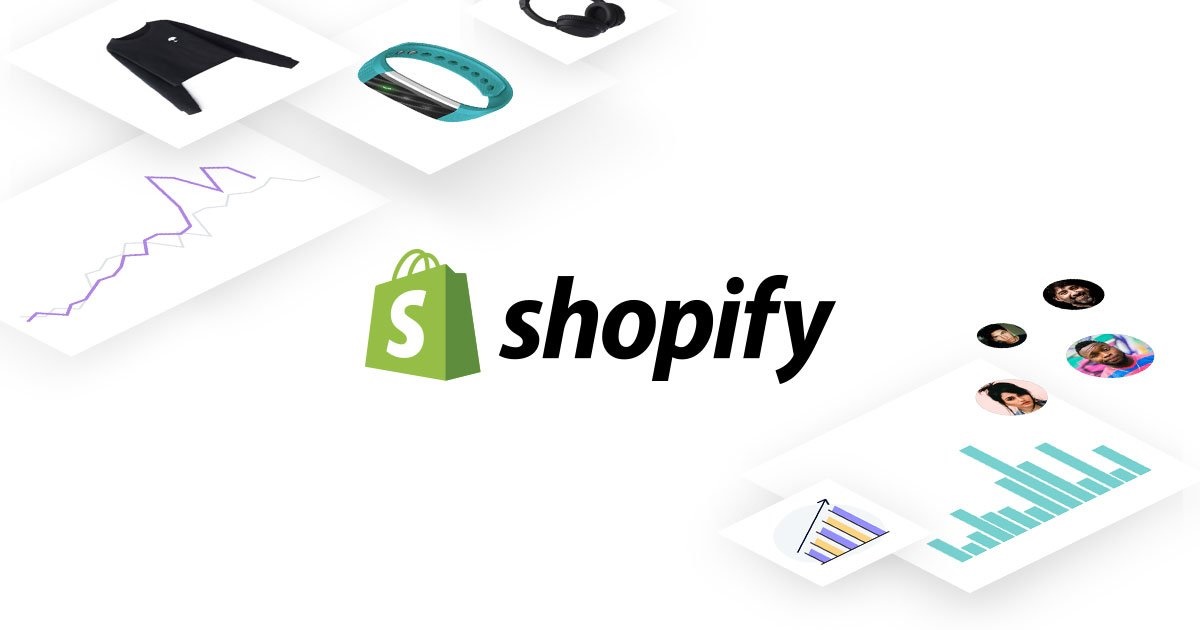7 Effective Tactics to Find Products to Sell on Shopify Store?
The massive boom in the growth of online stores has motivated more and more entrepreneurs to enter the e-Commerce competition, with Shopify being one of the most favored platforms to kickstart. You might have heard several success stories from everywhere, but setting up an online store is more complicated than you think.
Of all the challenges, picking the right products to maximize profits may be the toughest since it’s not easy to understand the market’s demands at all thoroughly. The fear of analyzing wrong customers’ insights can put the entrepreneurs into the dead-end sometimes, not to mention the fierce competition with trending product categories making you feel like what you intend you sell might be sold already.
But in whatever situation it is, don’t panic. There are still numerous opportunities for you if you execute the right strategy, and we’re here to give you some practical tips to start with.
Shopify overview

Shopify is one of the most well-established e-commerce platforms where you can create your online store. The web application is seen with more than 800,000 active stores all over the globe, which has generated more than $100 billion worth of sales.
Shopify minimizes your efforts spent on selling in your online store by offering extreme convenience, especially for small businesses and startups. On the platform, there are numerous customizable templates that you can freely choose and make modifications to meet your goals and requirements. These templates are applicable to both physical and digital goods. Moreover, you can set up and start selling on your Shopify store at ease with little coding knowledge as Shopify has simplified the technical process to help you focus on other aspects of growing your online business.
About the pricing, Shopify’s plans diversely range from $29 to $299 per month for regular plans. The prices vary based on the number of functionalities you might want to get. When you go with Shopify payments, there’s no transaction fee charged, but this is not applicable when you make payments via other third-party apps or payment gateways. If you’ve decided to commit to Shopify, you should consider subscribing annually or conclusively two years to save 10% or 20%, respectively.
For a more detailed look at Shopify, you can read more here.
How find products to sell on Shopify

1. Feed your hungry audience
The simplest reason to explain why a customer buys a product is that she needs it. In other words, people purchase to solve a specific problem, or more detailed, their pain point. Your business will always be useful if you’re able to “feed” the solutions to your hungry customers’ pain points.
Solving a pain point is short for addressing your customers’ frustrations with the choice of available products. This pain point is easy to notice if you pay attention closely enough - it comes from small details in daily life, such as an annoying experience with a particular product and the need for a quick fix. Just give it a try, and maybe you will find an idea for a profitable product within minutes!
2. Go from personal experiences
Think of your experiences as a professional way to generate a product idea. If you excel in a specific industry with an outstanding skillset and work experience, be confident to execute it into your online business. Specialized-knowledge-based products usually bring more value, have a much higher position in the market, and are not easy to copy.
Especially, taking advantage of your occupational passion for doing business can be extremely profitable since setting up a store requires a lot of effort, and you should always stay motivated to keep the work going. And of course, nothing is more encouraging than making money from what you truly love to do.
3. Catch up with recent trends

When you open an online store on Shopify, it’s useful to take a look at the trending products on other marketplaces such as eBay, Amazon, or Etsy, as they are direct competitors that operate in quite the same way. Browse these sites with some keywords such as “What’s trending”, “what’s hot”, “best-selling products”, “most popular items”, etc. and let the results shock you.
Apart from the trending products on e-Commerce platforms, a wise business owner should recognize any trends early to take the leading position in the market before anyone else does. Nowadays, the market has been generous enough to offer some digital tools that identify what’s popular in the meantime to help you grab some potential opportunities.
The simplest way is to browse for local trending hashtags on Facebook and Twitter, but usually, that wouldn’t help much. Recently, people have created forums on Reddit to discuss any topics from the middle of nowhere - and the expansion of this community is a huge potentiality. And if you want real analytics for better measurement, then Google Trend and Trend Hunter, which compiles trending topics on the internet and uses data, AI, and real humans to get customers’ insights, are definitely a good place to start.
4. Approach unique groups of audience
One way to take the lead in online business is to sell unique products that satisfy specific demands only. These groups usually include people with certain hobbies, interests or passions. These customers are usually more willing to pay for a definite product or service repeatedly, indicating a potential idea for a new profitable product line.
Additionally, these hobbyists may be much more engaged in your product than any others, since they’re more involved in the industry and able to utilize the value of the product. You can look for a list of popular hobbies/passions to brainstorm for your product ideas.
5. Take advantage of keywords
It will be such a waste if you skip on the use of search engines and keywords to convert organic traffic into real orders in this digital-driven world. You can now look for product potentiality based on popular search queries on search engines on the number of monthly searches.
However, this method requires you to have a certain level of knowledge about technology, keyword search, and search engine optimization. If you expert these techniques and are sensible with changes in Google’s algorithm, it could be extremely beneficial to understand the market demands through Google keyword searches to capture the constant organic traffic.
Aside from Google, there are many other keyword search tools where you can get trending keyword data to find ideas for your products. Some of the prominent names are Keyword Tool, Keywords Everywhere, or KeywordInspector.
6. Read feedbacks

When doing market research, businesses sometimes neglect customer reviews while these can be a great free source to gain your customers’ insights. Whenever you have an idea of products that already exist in the market, you should always look for their feedbacks. The feedbacks can reflect your customers’ thoughts on the products, which you can point out a common trend of opinions that may inspire you to develop more renovated ideas.
Pay closer attention to complaints or comments on what can be improved. You may think that this might be some fraudulent acts from other competitors, but if there are more negative comments than average, the products must have had some problems to be solved. Also, keep an eye on products that are consistently brought up for comparison. Analyzing these competing products will possibly give you direct answers on that “what to improve” question and trigger some ideas for optimal product attributes.
7. Conduct market testing
Before getting your products live, you should ensure that the public will love them. A good product might be such a flop if no one demands it. The most optimal way to measure the public’s level of interest is to test the market.
If you already have a product idea but don’t want to risk investing too much in it, you can save your budget and spend some on building a landing page to advertise your possible product. Go for the paid ads options to drive more traffic, and ask your interested visitors to leave their email for future email marketing campaigns. The success of this “project” may somewhat tell you something about the public’s preferences, and you can estimate how well your products may turn out.
Source your products without an inventory

After your product ideas are generated, it’s time you thought of a product acquisition method. There are 3 common ways to source products: find a manufacturer for a custom product line, co-operate with a drop shipper or contact a wholesaler for the middle goods. Many online product sourcing options are offered, in which you won’t have to store an inventory for goods and the suppliers will take care of the shipment for you. The following list includes some of the most prominent choices you can consider for your Shopify store.
Oberlo
Oberlo is an official part of the Shopify systems where drop-ship models are prioritized. The platform will help you contact the middlemen or third-party dropshippers, and you just have to order the products, add them to your Shopify store, and leave all the shipping tasks to the dropshippers. Oberlo offers a wide range of niche categories that are both ordinary and extraordinary, such as pet accessories, apparel, office supplies to travel gears. Also, Oberlo gets you updated on the suppliers’ inventory status with the price and stock monitor. Your products’ performance is also analyzed and reported so you can take it as a reference to choose products to add to the store.
Spocket
Spocket is popular as a trusted product sourcing app for the US and UK markets. The platform allows you to add products from dropship suppliers and expect a fast delivery time. The products available for sourcing through Spocket are pretty diverse, including apparel, footwear, beauty items, outdoor equipment, and several others. Especially, Spocket offers a promising discount policy where you can get a 30-60% discount on the retail price of all products through wholesale pricing, which will significantly benefit your profit margins.
Printful
Printful is a top-rated option if you want to print your custom designs on your products. Printful offers a wide range of customization selections to enhance your customer experience with customizable stickers, package inserts, labels, or logos. You can ask the suppliers to send you some samples at a discounted price at first to finalize the products before running your promotional campaigns. Printing options are available on many types and materials of products, including posters, t-shirts, leggings, embroidered hats, jackets, phone cases, or even sports bras.
Creative Hub
Creative Hub is the right marketplace if you’re thinking of selling art online. With Creative Hub, you can access a huge collection of premium art created by contemporary artists and add them to your store for selling. You will get the minimum price and your share as a vendor for each art piece. The price may vary depending on the quality of the piece itself, for example, the limited editions tend to command a much higher price.
Especially, shipping on Creative Hub is completely easy and transparent. The international shipping fee is kept fixed at 6 pounds for every product and country, so you can freely sell to anywhere in the world.
Final Words
Overall, choosing the right product to sell on Shopify has a significant impact on the success of your online business. The products themselves are the core and heart of your entire business that can directly affect your strategies, from marketing, pricing, promoting, or shipping.
Also, remember to define who you are and what your position is in the competition to specify the needs and properly satisfy them. We hope that our suggested tactics may somewhat draw you a general guideline on what elements to focus on and how you can execute them into finding the right products people want to buy.
New Posts

How To Set Up Google Analytics 4 For Your BigCommerce Store






